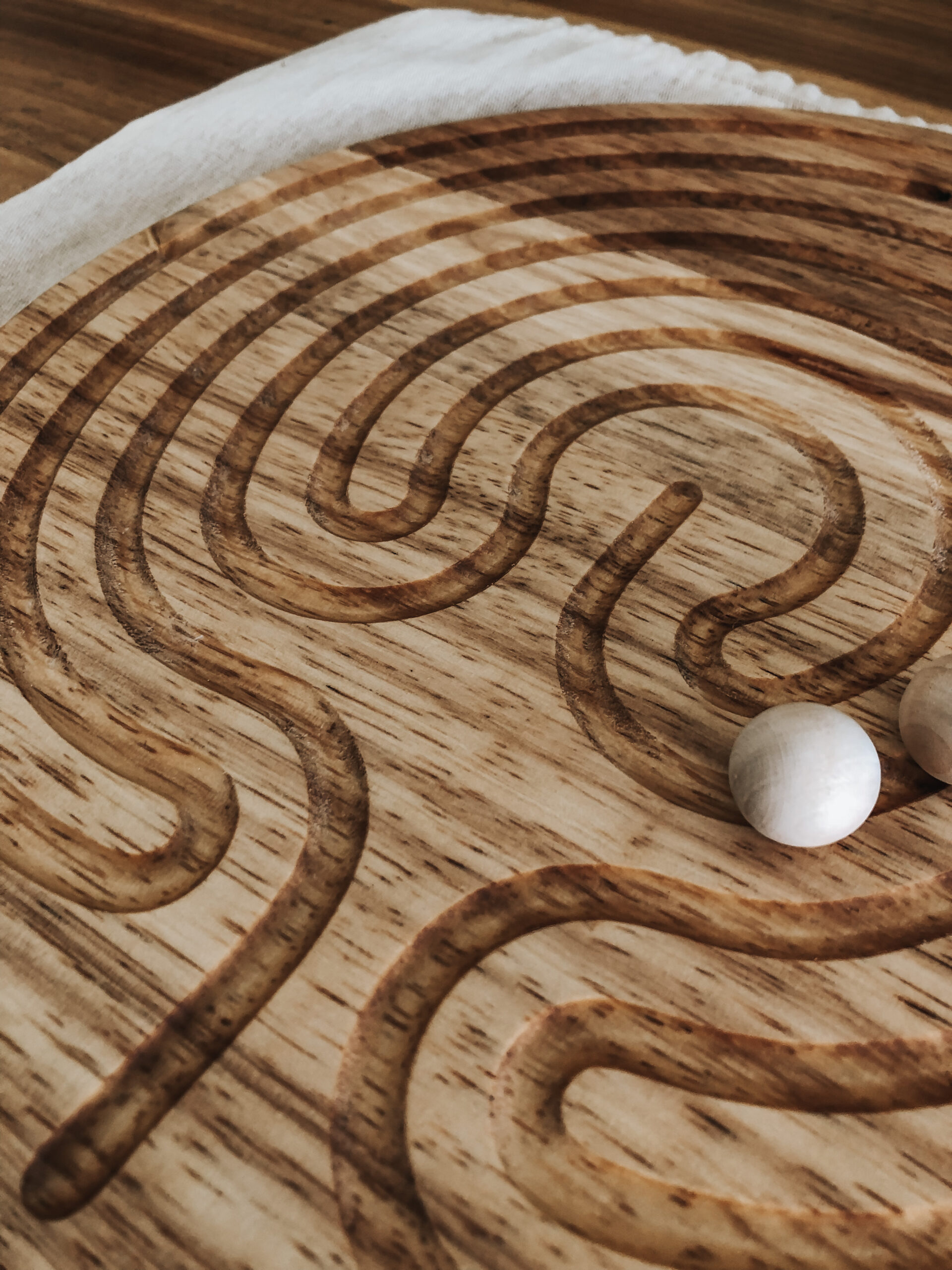MINDFUL LABYRINTH LRG
R384.00
Labyrinths have been around for over 4,000 years with labyrinth stone wall carvings, clay tablets and coins dating back to the Bronze Age. Labyrinths have been featured in Greek and Roman mythology and, in the Middle Ages, they started to appear in churches and temples around the world. Labyrinths have been used by many different cultures and religions across time as they have been known to be used for relaxation, meditation and prayer that can bring spiritual and emotional well-being to the lives of those who used them.
Labyrinths are meditation tools that have been used for centuries by many societies and cultures. There are different types, but they have things in common. Unlike a maze there is only one way into the center (and one one way out). The path of the labyrinth often symbolizes a journey. Some are large enough to physically walk but some are not. A finger labyrinth can help us find calm and become more relaxed.
These labyrinth’s are great for kids to come back to center, to calm their bodies or have a little “time within”. They are a great tool for developing mindfulness and learning the invaluable gift of calming themselves and identifying their emotions. For children experiencing sensory overload, a labyrinth can help bring grounding, control and a sense of brain regulation. They help children develop fine motor skills and visual motor skills and are also alot of fun!
It’s also great for adults! A labyrinth is an ancient symbol and a sacred tool that’s used in meditation and prayer. Some say labyrinths act as a metaphor for travelling inwards to the soul. Others say they act as a calming device because they simply provide people with a contemplative space to meditate. Today labyrinths are used as legitimate tools to help calm the agitated and to provide people with a helpful tool for meditation. Finger labyrinths are also used as a calming device and an aid in concentration.
“Labyrinths, which are ancient patterns large enough to be walked or small enough to be traced with the finger, represent tools for cultivating mindful habits. Mindfulness is the contemplative practice of focusing the attention on the present, non-judgmentally. By training the mind to remain fully present in each moment, the interior mental chatter that often plagues the mind becomes quiet, enhancing capacities or equanimity, clarity, and insight…Amid a culture that rewards speed and “busyness,” contemplative practice proposes a radical innovation for teaching and learning” Artress, L. (1995).
There is no set right or wrong way on doing your labyrinth walk, but below is a guide in how to start..
For children however, this may look a little different, like singing, chatting, humming or whatever helps them calm their bodies and hear their breath..
How to do a Finger Labyrinth Meditation?
-
Take deep breaths to begin to relax and focus on the entrance to the labyrinth.
-
Place your pointer finger from your non-dominate hand on the entrance of the labyrinth. If you find this too awkward at first, use your dominate hand. However, over time, keep trying your non-dominate hand. This helps keep the mind focused on the meditation due to the challenge it presents.
-
Slowly trace the pattern of the labyrinth with your finger allowing your mind to clear from extra thought and focus solely on following the path of the labyrinth. “Walk” to the centre of the labyrinth and rest momentarily, taking deep breaths observing how you are feeling.
-
Retrace your path out of the labyrinth.
-
Sit back, breathe deeply and relax. Observe how you are feeling again
Every wooden board is cut & individually oiled.
These wooden boards are sealed with a natural oil, simply wipe the timber with a damp cloth to keep it clean. You can re oil to maintain wear.
As this item is handmade using wood, it may have slightly different woodgrain and colour from what you see in the photo. Each piece is unique.
Suitable for children 3+
Sold out!










